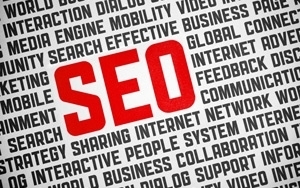First impressions matter.
Research tells us that when we meet somebody for the first time, we make snap judgements about them in just seven seconds.
That first instance is likely to set the tone for any future interaction. And this is no less true for business. Getting off on the right foot with a new customer is critical, and it all begins with a successful welcome email.
People form enduring impressions of your business from your first email communication. So, how do you make the most of this sliver of time and guarantee a positive impact?
Having tried a great many email strategies in my time, I’ve learned that although there is no one approach that works for every business, there are some tricks you can use to make your opening email that much more effective.
Let’s dive in!
1) A Clear Offer From the Start
As we’ve just covered, there’s a lot riding on a welcome email.
Your opening communication immediately sets up a tone for readers, telling them exactly what they can expect from your services.
Customers expect to gain a clear understanding of what you have to offer without being overwhelmed by unnecessary information. At the same time, they’ll want to get an authentic flavour of your brand.
There’s often a balance to be struck here and having a finely honed USP (unique sales proposition) comes in very useful.
Your USP is what distinguishes you from other businesses in your niche, allowing you to succinctly communicate what you can do for the customer. More specifically: what you can do for them that no other business can?
At UENI, we hammer home the USP in the opening line of the email, highlighting our offer in a short description of what we do and the services offered. We draw attention to this by mentioning it at the top, in the middle and at the end of our first email.
Don’t be coy about mentioning additional products or services either. These may feature less prominently for now, but it never hurts to include them.
And lastly, remember to keep it short and snappy.
2) The Personal Touch
It goes without saying, but your welcome email shouldn’t be all sell sell sell.
Your initial email is actually the first step to developing a positive relationship with your customer, which any good business should take seriously.
After all, establishing a personal connection to your brand is key to both attracting and retaining customers.
Think of onboarding like any other human exchange; your customers expect to be approached with care and made to feel valued.
There are some basic rules here. The most important one is to thank the customer for subscribing, signing up, or making a purchase.
Good emails achieve this even before you open them with a personally addressed subject line. In fact, marketing research shows that emails with personalized subject lines are 25% more likely to get opened.
And, while you’re at it, why not take it one step further? Addressing customers personally can be effective but in 2020, it’s also the increasing norm.
To stand out, consider using other pieces of pre-populated data from the sign-up process to personalise your message.
Perhaps try segmenting your welcome emails based on anything from industry to age. In my experience, this tactic works: the majority of our most successful emails were sent to segmented audiences of between 200-900 recipients.
Just remember to include what you want to know on your online registration form and steer clear of asking for too much information – this can be a massive turn-off.
3) It’s All About Timing
With any marketing campaign, it’s important to reach customers at the peak of their interest.
To tap into that early enthusiasm, it’s vital you get your welcome email sent out the moment they hit the sign-up button. This means creating a streamlined sign-up process is a must. In UENI’s case, our automated process takes place inside three clicks and sends customers an email seconds after they hit go.
It’s not just about being responsive, it’s also about making sure your welcome email isn’t submerged under an avalanche of other emails and let’s face it, more pressing personal interests.
It might seem obvious but the unhappy fact is that 41% of brands don’t send out a welcome email within the first 48 hours.
This is in spite of the manifest evidence that these first two days are when your customers will be at their most enthusiastic and interested.
Lesson here: don’t make the mistake of waiting.
4) Think Easy and Efficient
Actionable copy is the backbone of any good welcome email.
It’s important to set out a clear process of engagement starting with a direct subject line that identifies the sender, recipient and purpose of the email. There’s no need to be too creative here; you just want them to take notice, open it and then read it.
When it comes to your first message, one of the most helpful things you can do for the customer is to keep it short and simple.
You want to get users hooked on your service and give them a clear idea of what their next steps should be. But you don’t want to overwhelm them with info or spend too long explaining the finer points of every feature.
In the main body of the email, you want to engage your customer with your offering without offering them too much.
It’s also a good idea to avoid any overly salesy CTAs in your first email as these can be something of a turn-off this early on. At this stage in the process, your best bet is to detail what you do and help them to understand what your product can do for them.
5) Purposeful Design
When it comes to first impressions, it’s an inescapable fact that cosmetics matter.
In truth, you probably have even less time to make a digital impression than you do one-to-one. A Canadian study found that internet users form subliminal impressions about websites in 50 milliseconds.
Customers will make instant judgements about your business based on the overall feel and design of your welcome email.
To really stick the landing with your target audience, you’ll need to ensure that your design is consonant with your USP. And understanding the person you’re speaking to will take you a long way towards this.
UENI’s audience is time-strapped entrepreneurs who want to efficiently create a business website at zero upfront cost. This is reflected in our minimalistic welcome email, designed to make the onboarding process clear and simple.
Striking visual features are essential to any email marketing campaign, but never for their own sake. Instead, using bold brand colours to highlight your CTAs (calls to action), will help them stand out and make them easier to follow up on.
As well as being easy on the eye, your welcome email should illustrate what your specific product is capable of doing.
Simple videos and high-resolution photos are a great way to communicate your offer in that split-second window where a new subscriber is still forming an opinion about your business.
Following through
So what does a good welcome email look like?
Well, it should make a strong case for your USP, with an added personal flourish. Your design should closely mirror user intention and highlight an easy course of action for customers to progress.
Lastly, an effective welcome email should be sent within the first 48 hours of a customer clicking the sign-up button.
However, the most important take-home is that there is no one size fits all approach.
In fact, getting your welcome email right largely hinges on understanding the specific needs of your customers. It’s a continuous process of refining and testing your assumptions about the people your business serves.
There are many variables that can affect an opening email’s results, and what works for one company may not work for another.
So, change one thing at a time, and test how each one impacts that important metrics.
And if at first you don’t succeed, try, try again!
Digital & Social Articles on Business 2 Community
(16)




